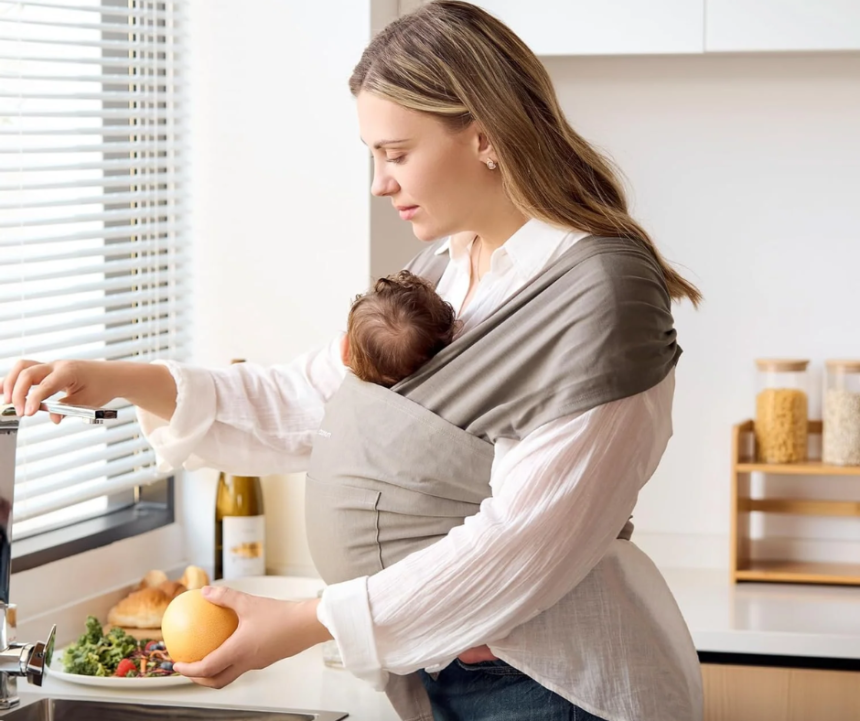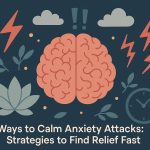Through infancy, there is a common developmental milestone that is often misunderstood by many parents, this is the separation anxiety stage. When your child is born, they have this notion that their primary caregivers are a part of them. But then they will come to realize that you are a separate individual. With this understanding they begin to feel the fear of being on their own, even for short periods of time. Parents find this stage a bit more challenging especially if they don’t understand how their child feels and why they are feeling this way.
And just like preparing with practical tools, like a baby wrap carrier that keeps your child close while you move around, grasping and understanding the situation of infants and separation anxiety can help you respond to your child with more patience. By having an understanding on a deeper level, when it typically happens and how you can handle it with patience, you are doing more than supporting them in these challenging times, but you are strengthening the bond that you have with your child.
What Exactly Is Separation Anxiety in Infants?
Many parents wonder, what is it with infants and separation anxiety? Basically, separation anxiety is the distressed feeling of an infant when they get separated from their primary care providers. Although this is a normal indicator that your child is growing aware that you exist even when they aren’t seeing you around it can be perceived negatively.
To put simply, separation anxiety is a clear signal that your child is developing strong emotional connections and having an understanding of an object’s permanence meaning that they are grasping the concept that things exist even if they couldn’t see them.
The Typical Timeline for Separation Anxiety
With all the chaos that is happening all around their newborn, parents find themselves asking, when does this separation anxiety typically begin? For most babies, they start showing signs around 6 – 9 months and peaks by 10 – 18 months, but some infants can experience it earlier or some others later. This will highly depend on their temperament and environment.
For a lot of families, this stage can last for many months, but it usually eases when the child is around the age of 2, when they gain more confidence in themselves and independence.
Recognizing the Signs: More Than Just Crying
Although crying is the most obvious sign of infants having separation anxiety, it is not the only indicator. Babies can show anxiety in many other ways that could include:
- Becoming upset when they are approached by unfamiliar people
- Tightly clinging to you when you attempt to leave the room
- Visible distress even when just separated for just a few minutes
- Refusing to sleep without a parent visibly around.
Understanding these signals can help you respond to them with more empathy and patience rather than feeling defeated or frustrated.
The Science Behind a Baby’s Fear of Being Left Alone
The root cause of an infant’s separation anxiety mainly lies with the level of their brain development. By the time they reach 6 months, babies develop object permanence, this is realizing that their caregivers still exist even when they couldn’t see them. This is a big cognitive leap and along with it is the fear that if you’re not anywhere to be seen, you may not return.
In addition to this, infants are biologically wired to depend on their caregivers for their survival. Their distress ensures that they remain close, which on a historical point has increased their chances of safety and protection. From the modern science perspective, the more we respond warmly to this distress actually promotes emotional resilience later in their lives.
How to Comfort and Reassure Your Baby
As parents what you want to do is to help ease the challenges for infants and separation anxiety altogether. While it could be hard to really prevent it, you can take some steps to make it more manageable.
- Practice brief separations – start by some quick moments apart and gradually increase the time being away.
- Offer a comfort item – their favorite toy or blanket can help in this phase.
- Stay calm and reassuring – babies can feel if you’re stressed out
- Use proximity tools – a baby wrap carrier lets you keep your baby close while maintaining mobility, this also helps reassure your little one that they are safe
- Creating consistent routine – predictable patterns builds a sense of safety for them
Making Goodbyes Smoother for Both of You
Saying goodbyes can be considered the hardest part when dealing with infants and separation anxiety. You might feel tempted with just sneaking out and it may feel easier for you, but this can actually heighten your child’s distress. But there are other things that you could do instead:
- Keep your goodbyes brief and cheerful because long, drawn-out exits can increase anxiety.
- Create a “goodbye” ritual like a kiss, wave or a cute special phrase.
- Always return when you say you will. Reliability helps build trust.
- Allow your caregiver to engage your baby in any activity before you leave to ease the transition.
Is It Separation Anxiety or Something Else?
You should be aware of the difference between infant separation anxiety and other problems. The occasional clinginess or fussiness doesn’t necessarily imply that your child is anxious. There are moments when your baby indicates more than usual distress outside the common timeline, grapples in more than one area of development or they are unconsolable, it is advisable to talk to your pediatrician immediately.
Ruling out other causes like illness, teething, or changes in routine helps your baby receive the right kind of support and consolation.
The Big Picture: Building a Secure Attachment
Taking care of your infants and separation anxiety is difficult work right now, but it contributes significantly towards your baby’s long-term emotional well-being. When you’re warming to these needs, being consistent with compassion, you’re establishing your child’s appropriate emotional growth, laying a solid ground which will encourage confidence, self-reliance, and healthy interpersonal relationships in the future of your child.
Try to think of it this way, your baby’s tears when you leave aren’t signs of weakness but a sign of love and trust. They feel safest around you and that’s the exact relationship you want to nurture,
Conclusion
Navigating through this phase of infants and separation anxiety can be an emotional journey for both parents and babies. There will be times when it will become overwhelming but remember that it is natural and a healthy part of your child’s development. By understanding what it is, when it occurs, and how to respond with compassion, you can help your baby feel reassured and secure.
Whether it’s creating a goodbye ritual, using tools like a baby wrap carrier, or simply offering extra cuddles, your consistent love and presence will guide your baby through this challenging phase. Along this you’re also building not only resilience but also a deeper emotional bond that will last a lifetime.
Lynn Martelli is an editor at Readability. She received her MFA in Creative Writing from Antioch University and has worked as an editor for over 10 years. Lynn has edited a wide variety of books, including fiction, non-fiction, memoirs, and more. In her free time, Lynn enjoys reading, writing, and spending time with her family and friends.















